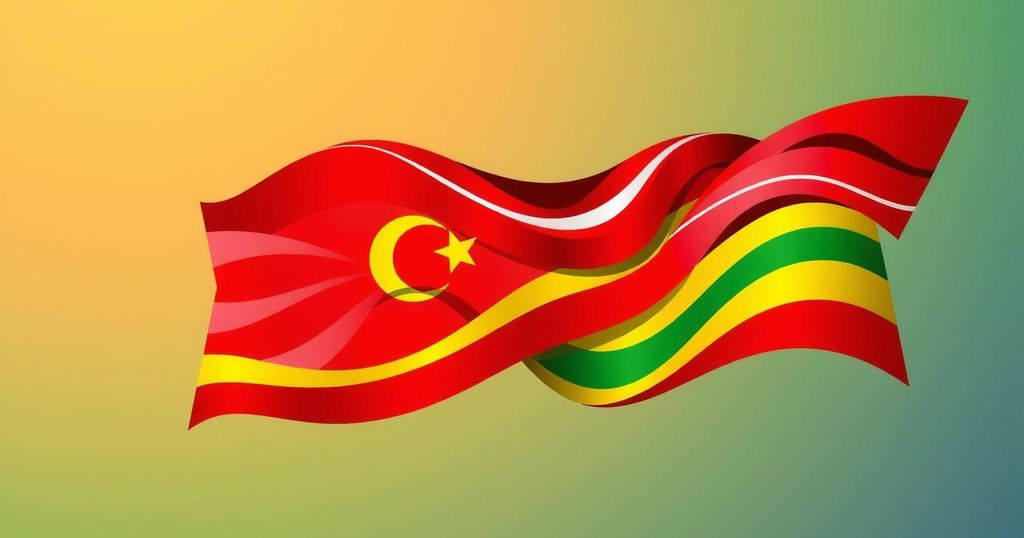Proposal for Redesigning Ghana’s National Flag: A Vision for Unity and Hope
This article discusses a proposal by McHenryson Agbesi to change Ghana’s national flag by replacing the black star with a bright star, symbolizing hope and a bright future. The article highlights the historical significance of the flag’s colors and suggests a wider cultural transformation within Ghana. The proposed redesign emphasizes optimism and unity, positioning it as a reflection of the nation’s aspirations.
The national flag of Ghana, created by Mrs. Theodosia Salome Okoh, was adopted in 1957 to replace the British flag upon the nation’s independence. It was designed with colors chosen to reflect the sociocultural realities of the time, intended to embody hope, aspiration, and the future of the Ghanaian people. The flag has undergone modifications, including the addition of a third star in 1959 and, later, a change in color that mirrored political shifts under Kwame Nkrumah.
The Ghanaian flag is a vital national symbol rich in historical significance. While some countries retain a single flag throughout their histories, others opt for changes that signal ideological shifts or leadership changes. This is particularly relevant in discussions regarding the evolution of national identity, prompting suggestions for redesigning the Ghana flag to include a white star representing hope and aspirations for the future.
The colors of the Ghana flag hold profound meanings: red symbolizes the blood shed for independence, gold reflects the nation’s mineral wealth, the black star denotes African unity and emancipation, while green represents Ghana’s lush forests and natural resources. As Ghana moves toward a national reset, it is proposed that the star change from black to white to reflect the nation’s dynamic mindset and vision for the future.
Further, the idea of renaming the black star to a bright star, invoking biblical precedents where God changed the names of notable figures to indicate transformation and greatness, aligns with the concept that stars should shine brightly for all to see. By adopting this change, the flag would carry a renewed sense of purpose and resilience, enhancing Ghana’s identity on both a national and international scale.
The suggested redesign of the Ghana flag includes the following elements: red for independence blood, gold for mineral wealth, and a bright star representing a united and hopeful future. Furthermore, it is recommended to rename key national symbols currently incorporating the term “black” to reflect this new positive identity.
In conclusion, the advocacy for redesigning the Ghana flag underscores a broader commitment to cultural integrity and optimism for the future. Transitioning from a black star to a bright star aligns with the aspirations of Ghanaians, promoting a spirit of unity and resilience during a pivotal era in the nation’s history.
In summary, the proposal to change the Ghanaian flag from a black star to a bright star encapsulates a vision of hope and unity for the country. The suggested redesign emphasizes values of aspiration and cultural identity, advocating for a symbol that resonates with the aspirations of Ghanaians. This change reflects not only a renewed national identity but also aligns with broader discussions about the meaning and significance of national symbols in light of evolving societal values.
Original Source: www.ghanaweb.com




Post Comment